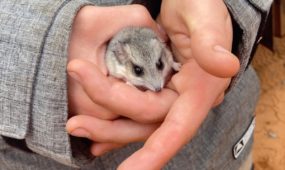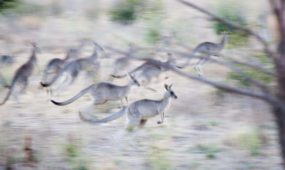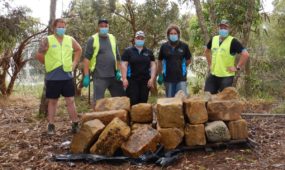Conservation Drones take off from Adelaide
Environment
LIAN Pin Koh is one half of the foundation team behind Conservation Drones, the unique and low cost approach to animal and forestry monitoring.

Sign up to receive notifications about new stories in this category.
Thank you for subscribing to story notifications.
LIAN Pin Koh is one half of the foundation team behind Conservation Drones, the unique and low cost approach to animal and forestry monitoring.
Now he is Associate Professor and Chair of the Applied Ecology & Conservation group (AEC) in the School of Earth and Environmental Sciences and the Environment Institute at the University of Adelaide.
Working in 2011 with primate biologist Serge Wich to assess orangutan populations in illegally-logged Asian forests, the two men came up with the idea to fly unmanned aerial vehicles (UAV) to count tree-mounted primate nests from the skies.
“But drones are really expensive, and ecologists are really poor,” explained Lian, speaking last week at the 7th Annual South Australian Spatial Information Day (SID2014).
The duo came up with their first prototype for less than USD$2000, and trialled it successfully in North Sumatra, Indonesia. The captured YouTube footage went viral, and lead to the formation of ConservationDrones.org as a worldwide initiative that seeks to build capacity in the developing tropics to use UAVs for conservation.
Lian is currently directly involved in two active animal conservation projects from his base in Adelaide.
“We are working in Nepal to build UAVs for rangers to patrol their national parks,” he explained.
Poaching of rhinos and elephants is an ongoing problem in Nepal.
“Nobody is supposed to be in the national parks, so they use the UAVs to simply look out for people,” said Lian.
Conservation drones are also being used to protect endangered cat populations.
“We recently started a project in India, in a national park called the Panna Tiger Reserve. There have 20 or so tigers there, and we track them to follow how well they are doing,” Lian said.
Lian and his colleagues are also paving the way to apply UAVs for Australian conservation applications.
“I’m establishing my group and sorting out the paperwork and regulations that are required to fly one of these things in Australia,” he said.
“The Civil Aviation Safety Authority requires permission and certification for flying. This is a good thing,” he said.
Lian has used his UAVs to conduct a small trial project looking at revegetation of mallee scrub after a bushfire, working at Calperum Station in the Riverlands.
“The mallee work was on a very small scale, and we could perform it as the drones remained within line of site,” he explained.
Conservation Drones National Geographic
Jump to next article



